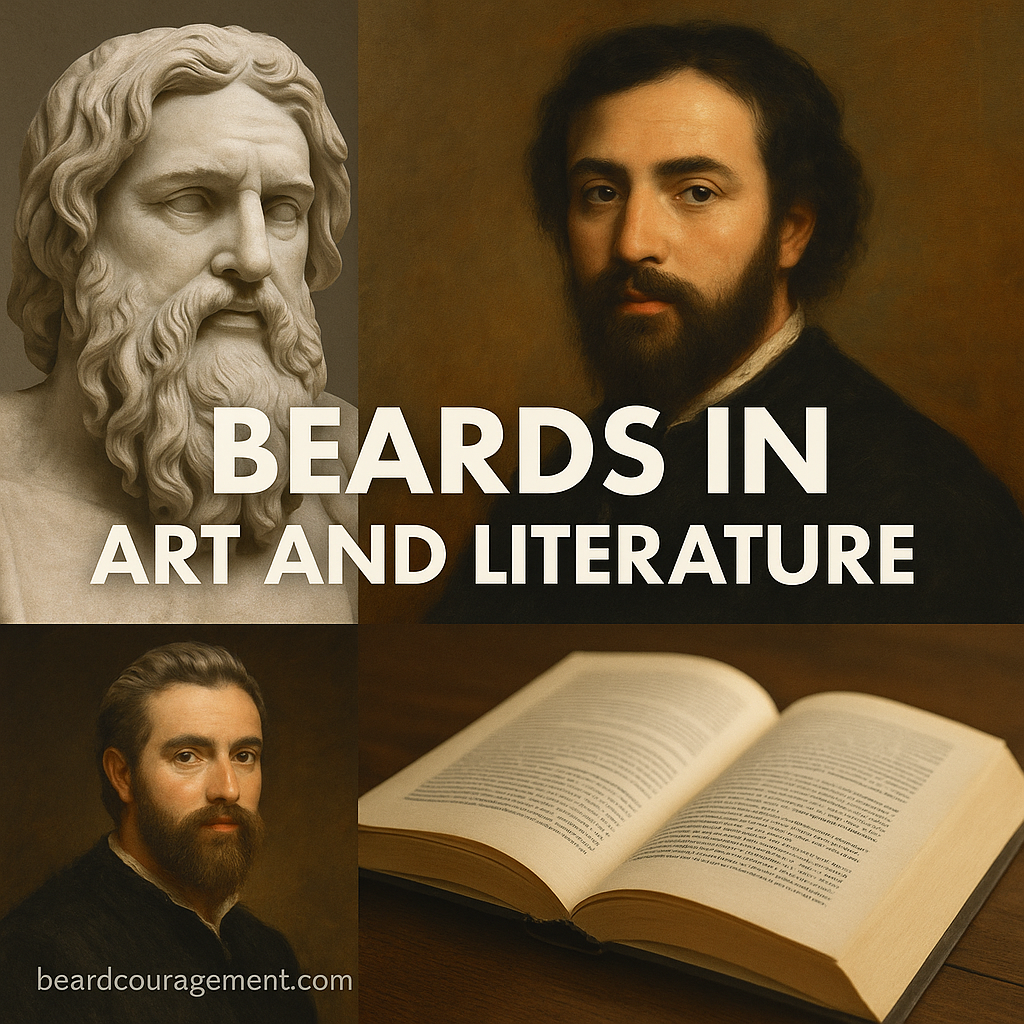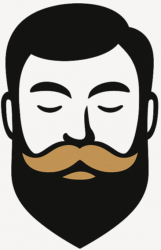
Throughout history, beards have symbolized wisdom, masculinity, spirituality, and rebellion — themes that artists and writers have explored for centuries. From ancient sculptures to modern novels, the beard has been more than a feature of the face — it’s been a statement of the soul.
In both art and literature, beards often reflect the culture, values, and beliefs of their time. Let’s take a journey through how the beard has been portrayed across creative works — and what these depictions reveal about humanity itself.
Beards in Ancient and Classical Art
In ancient art, the beard was often a sign of power and divinity. Civilizations like the Egyptians, Greeks, and Mesopotamians used the beard as a visual marker of authority and immortality.
Egyptian Symbolism
Pharaohs wore false beards made of metal, known as postiches, to symbolize divine connection. Even female rulers, like Hatshepsut, donned the ceremonial beard to project power equal to male kings.
Greek and Roman Sculpture
Greek art celebrated the philosopher’s beard — long, flowing, and full of character. Figures like Socrates and Plato were depicted with full beards, representing intellect and contemplation.
Romans initially followed this tradition, but later generations (like Emperor Hadrian) revived the beard as a mark of maturity and strength.
In ancient stone and marble, the beard wasn’t just facial hair — it was identity carved in permanence.
Beards in Religious and Medieval Art
As society evolved, the beard took on new meanings rooted in spirituality and morality.
Christian Iconography
In early Christian art, beards distinguished divine figures from mortals. Christ, prophets, and apostles were often portrayed with full beards, symbolizing divine wisdom and human compassion.
Medieval Europe
During the Middle Ages, the beard represented honor and chivalry. Knights and saints were frequently depicted with short, disciplined beards — a reflection of piety and courage. In contrast, villains or unkempt figures were often shown beardless, implying moral weakness or deceit.
The beard had become not only a physical feature but also a moral and spiritual emblem.
Beards in Renaissance and Enlightenment Portraits
The Renaissance revived classical ideals, and with it, the beard once again became a subject of artistic mastery. Painters used facial hair to communicate intellect, style, and status.
Renaissance Realism
Artists like Leonardo da Vinci and Albrecht Dürer painted beards with stunning precision — each strand representing the individuality of man.
Beards symbolized creative thought and depth, distinguishing scholars and explorers from the masses.
The Enlightenment Shift
As Enlightenment ideals of rationality emerged, the beard temporarily fell from favor. Smooth faces represented reason, order, and modernity, while beards became linked with mysticism or outdated traditions.
This clean-shaven ideal would persist for centuries — until the cultural shifts of the 19th century brought the beard roaring back.
Beards in Literature: Symbols of Character and Identity
In literature, the beard has always been more than description — it’s character development in disguise. Writers use facial hair to define a man’s personality, morality, and social status.
Wisdom and Experience
From Homer’s Odysseus to Tolkien’s Gandalf, beards have marked heroes of experience and intellect. A beard often signals wisdom earned through time, hardship, and endurance.
Power and Defiance
In 19th-century novels, beards became symbols of rugged independence. Characters like Captain Ahab in Moby Dick and Ebenezer Scrooge in A Christmas Carol wore their beards as outward signs of their grit and willpower.
Freedom and Rebellion
By the 20th century, writers began associating beards with creativity and resistance. From the beat poets of the 1950s to modern literary figures, the beard became shorthand for freedom of thought and artistic identity.
The Modern Artistic Beard
In modern and contemporary art, beards are portrayed as expressions of individuality, diversity, and even vulnerability.
Photographers and painters use bearded faces to explore themes of masculinity, heritage, and self-image. The beard has become a tool for storytelling — not about conformity, but about character.
In literature today, beards are often used symbolically to explore personal transformation. From characters who grow beards during periods of introspection to those who shave them as acts of renewal, facial hair represents emotional evolution.
The Timeless Symbolism of the Beard
Across centuries, cultures, and mediums, the beard remains one of humanity’s most enduring symbols. It can signify wisdom or rebellion, control or creativity — depending on who wears it and who depicts it.
In art and literature alike, the beard is both personal and universal. It tells stories of culture, character, and change.
As long as humans continue to seek meaning through creativity, the beard will remain a brushstroke of identity — one that connects us to our past while reflecting who we are today.
